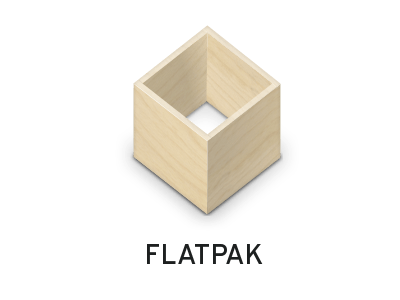How To Install Flatpak on Linux Mint 22

In this tutorial, we will show you how to install Flatpak on Linux Mint 22. Flatpak is a package management utility designed to simplify the process of installing and managing software on Linux systems. Unlike traditional package managers, Flatpak packages include all the dependencies required to run an application, ensuring that it works across different distributions. This containerized approach also enhances security by running applications in isolated environments, preventing them from interfering with the system or other applications.
This article assumes you have at least basic knowledge of Linux, know how to use the shell, and most importantly, you host your site on your own VPS. The installation is quite simple and assumes you are running in the root account, if not you may need to add ‘sudo‘ to the commands to get root privileges. I will show you the step-by-step installation of Flatpak on Linux Mint 22.
Prerequisites
- A server running one of the following operating systems: Linux Mint 22.
- It’s recommended that you use a fresh OS install to prevent any potential issues.
- While we’ll guide you through the process, a basic understanding of the command line will be beneficial. If you’re new to the CLI, you might want to acquaint yourself with some fundamental commands.
- A stable internet connection for downloading packages.
- Administrative privileges are essential for installing and configuring software on your system. Ensure that you have superuser or sudo access.
Install Flatpak on Linux Mint 22
Step 1. Update Your Linux Mint System.
Before installing Flatpak, it’s crucial to update the package database to ensure you have access to the latest versions of the required packages. Run the following command in the terminal:
sudo apt update sudo apt upgrade
This command retrieves the latest package information from the repositories, ensuring that you install the most up-to-date version of Snapd.
Step 2. Installing Flatpak.
- Using Terminal.
Add the official Flatpak repository to your system by executing the following command:
sudo add-apt-repository ppa:alexlarsson/flatpak
Once the repository is added, update your system’s package lists to include the newly added Flatpak PPA:
sudo apt update
Now, you can proceed with installing Flatpak by running the following command:
sudo apt install flatpak
To enable seamless integration with the Cinnamon desktop environment, install the Flatpak plugin for Cinnamon:
sudo apt install flatpak-plugin-cinnamon
Once the installation is complete, restart your system to ensure that all changes take effect:
sudo reboot
By following these terminal commands, you can quickly and easily install Flatpak on Linux Mint 22, enabling you to start exploring and installing applications from the vast Flathub repository.
- Using Software Manager.
For users who prefer a graphical interface, Linux Mint 22 provides an alternative method to install Flatpak using the Software Manager. Here’s how to do it:
-
- Open the Software Manager from the application menu or by searching for it in the menu search bar.
- In the Software Manager, click on the search icon and type “Flatpak” in the search bar.
- From the search results, locate the “Flatpak” package and click on it to view its details.
- Click on the “Install” button to begin the installation process. You may be prompted to enter your administrative password to authorize the installation.
- The Software Manager will now download and install the necessary Flatpak packages. This process may take a few minutes, depending on your internet connection speed.
- Once the installation is complete, you may need to install the Flatpak plugin for Cinnamon to enable better integration with the desktop environment. To do this, search for “flatpak-plugin-cinnamon” in the Software Manager and install it as well.
- After installing both Flatpak and the Cinnamon plugin, restart your system to ensure that all changes are applied correctly.
Using the Software Manager provides a user-friendly and intuitive way to install Flatpak on Linux Mint 22, making it accessible to users who may not be comfortable using the terminal.
Step 3. Configuring Flatpak.
- Adding Flathub Repository
Flathub is the primary source for obtaining Flatpak applications. It is a centralized repository that hosts a wide variety of applications packaged as Flatpaks. To enable access to Flathub, you need to add its repository to your system. Here’s how:
To grant an application access to specific system resources, such as the home directory, use the following command:
sudo flatpak override --filesystem=$HOME/.themes
You can also use the --device option to grant access to specific devices, such as webcams or microphones:
sudo flatpak override --device=webcam
By carefully managing permissions for Flatpak applications, you can strike a balance between security and functionality, ensuring that applications have the necessary access to system resources while maintaining a secure environment.
- Updating Flatpak Applications.
Keeping your Flatpak applications up to date is essential for accessing the latest features, bug fixes, and security patches. To update all installed Flatpak applications, use the following command in the terminal:
flatpak update
Step 4. Installing Applications Using Flatpak.
With Flatpak installed and configured on your Linux Mint 22 system, you can now easily install applications from the Flathub repository. Here’s how to search for and install applications using Flatpak:
To search for an application, use the following command in the terminal:
flatpak search <application_name>
Once you have identified the desired application, you can install it using the following command:
flatpak install flathub <application_name>
After the installation is complete, you can launch the application from the application menu or by using the following command in the terminal:
flatpak run <application_name>
By leveraging the power of Flatpak and the extensive Flathub repository, you can easily discover, install, and run a wide range of applications on your Linux Mint 22 system.
Congratulations! You have successfully installed Flatpak. Thanks for using this tutorial to install the latest version of Flatpak on the Linux Mint system. For additional help or useful information, we recommend you check the official Flatpak website.